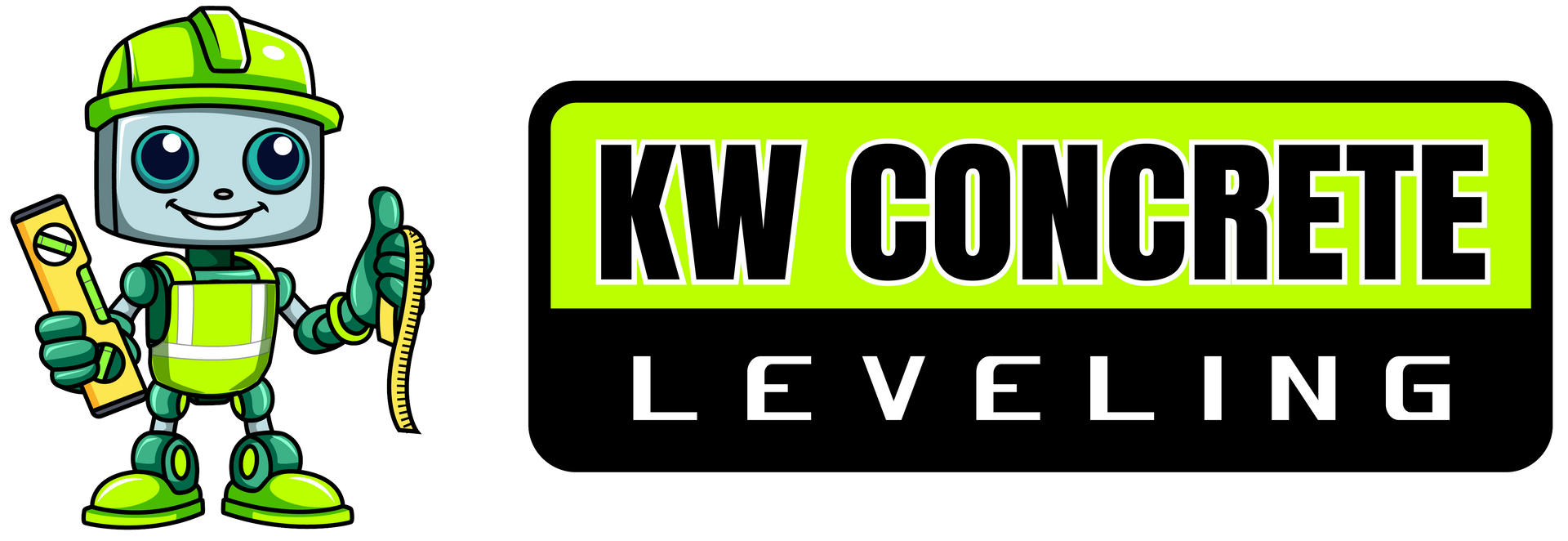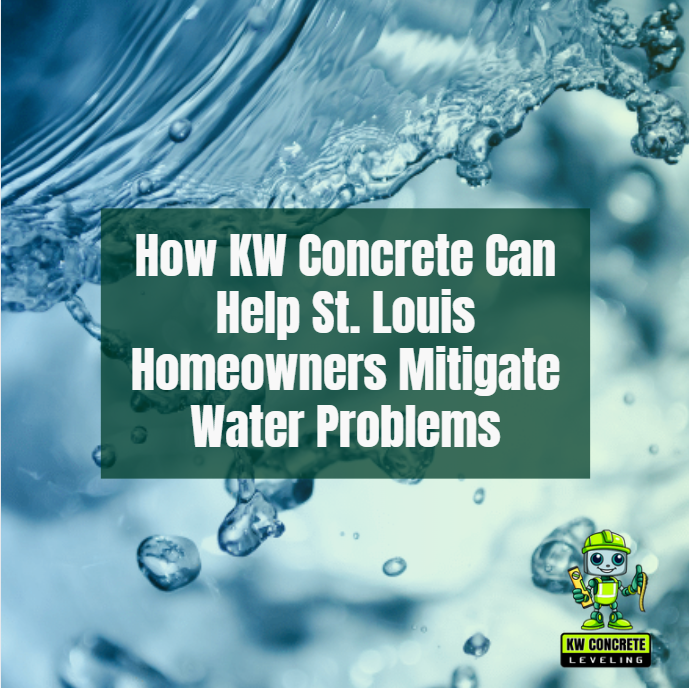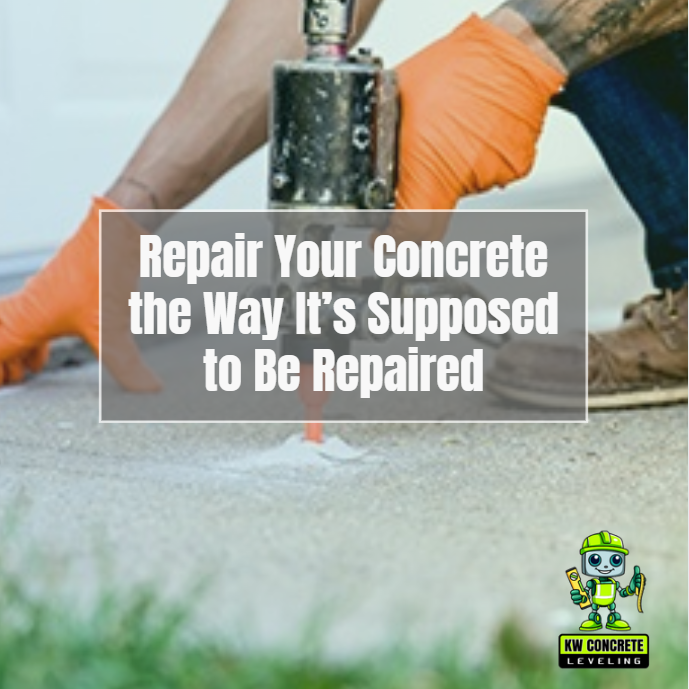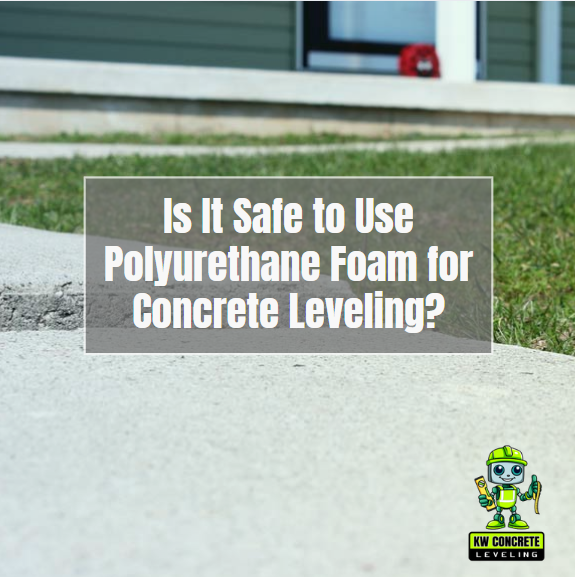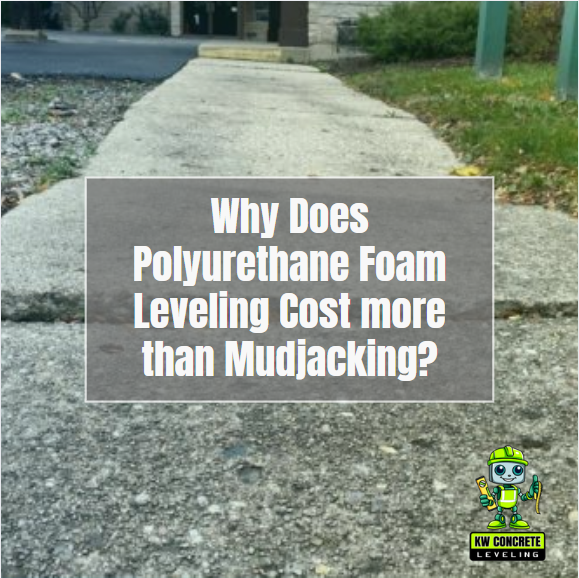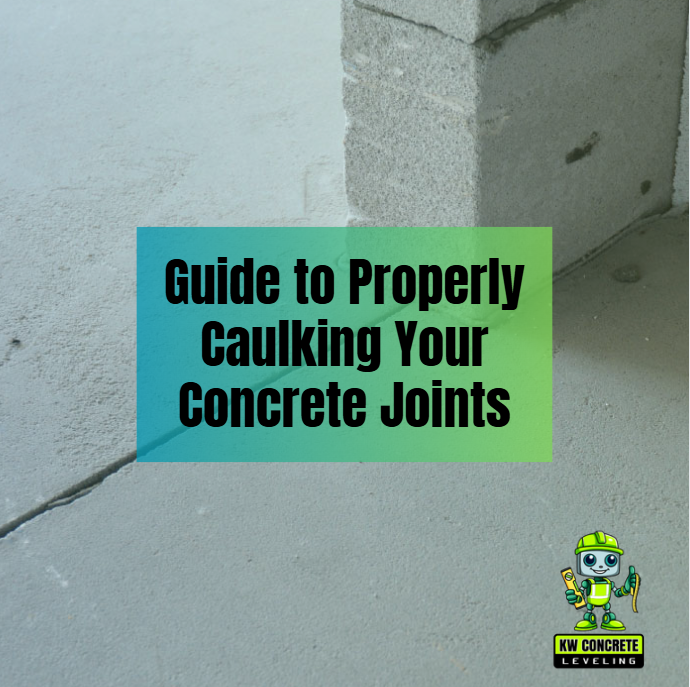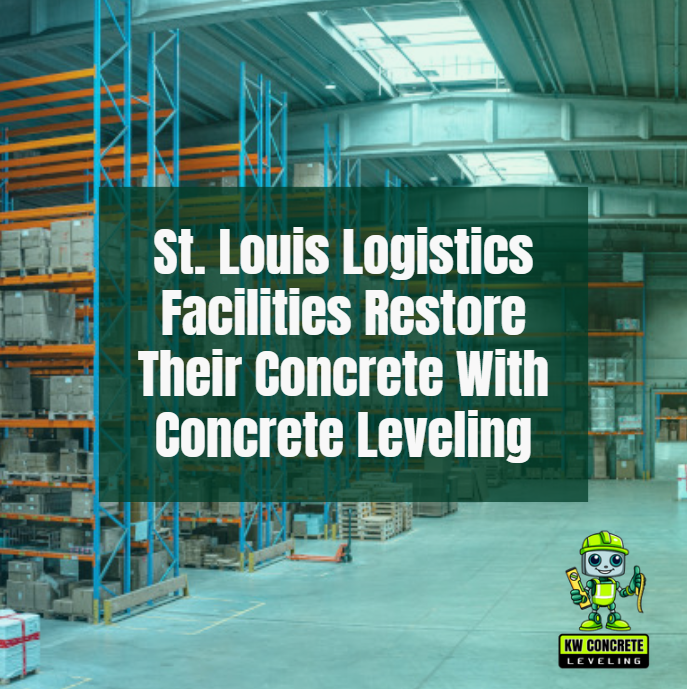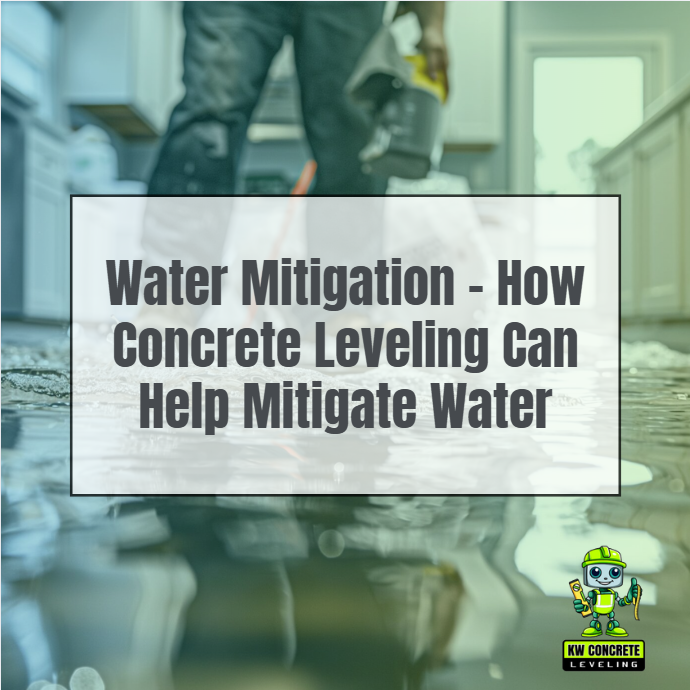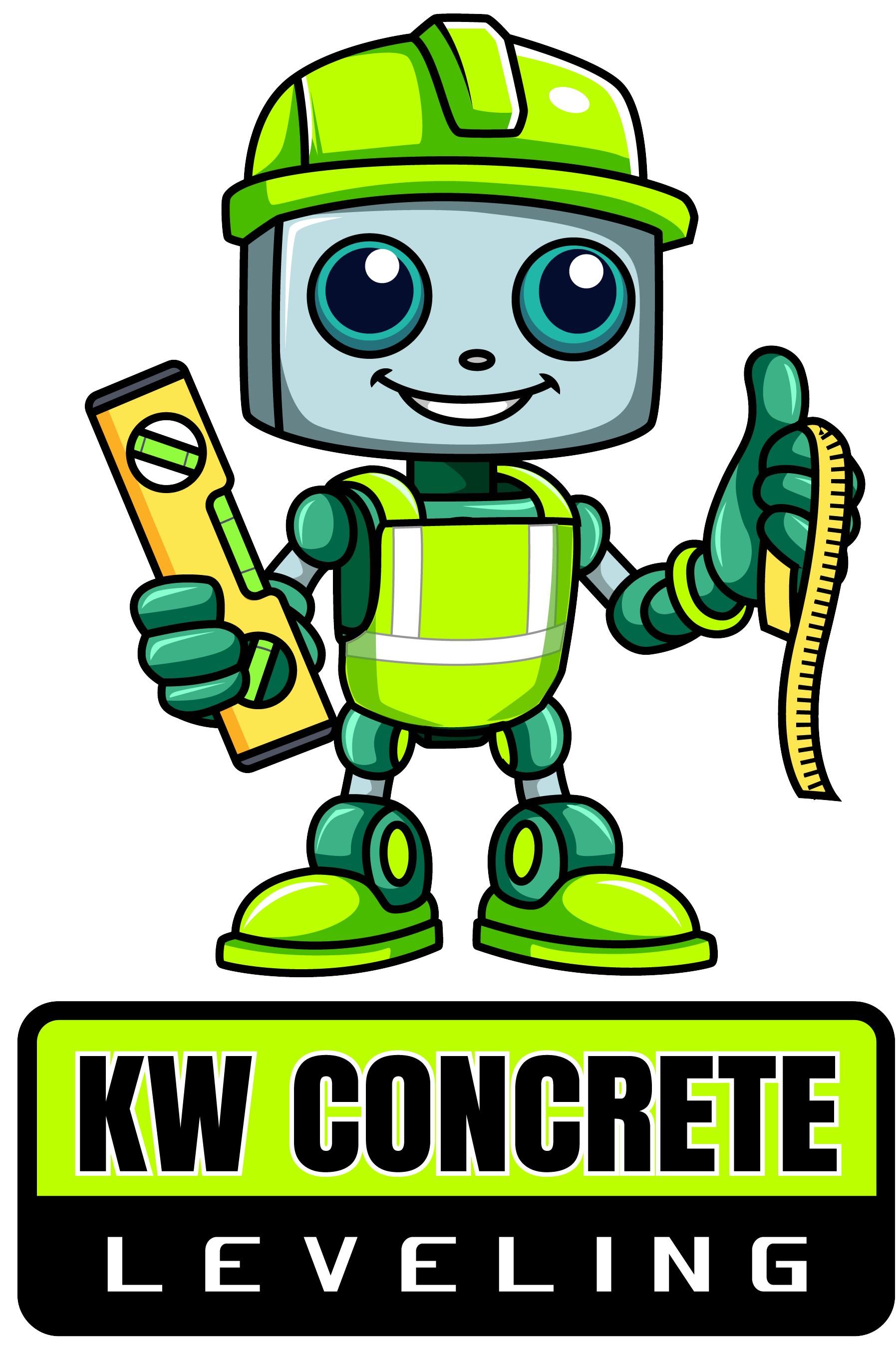Phone:
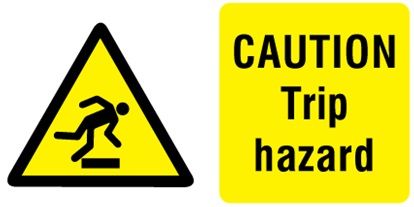
Trip Hazards and Liability: How Concrete Leveling Can Save You from Legal Trouble
Concrete trip hazards are a hidden danger that can cause accidents, injuries and even expensive legal fees. What is a trip hazard and how do you address it is critical information for property owners.
This blog will discuss what causes trip hazards, where they occur, and also how addressing them promptly could save you money, protect others, and enhance the security and look of your property.
What Are Concrete Trip Hazards?
Any uneven or raised surface that could cause someone to trip and fall is a concrete trip hazard. These hazards most often develop when sections of concrete are uneven such as on sidewalks, driveways or patios.
Even a 14-inch elevation difference can create a serious tripping hazard. Whether brought on by structural issues or natural factors, these hazards can put pedestrians in danger and expose property owners to liability.
What Causes Trip Hazards?
Uneven concrete surfaces can result from several different factors:
Erosion of Soil:
Soil beneath concrete slabs may shift or wash away with time due to water drainage or poor compaction, causing the slabs to settle unevenly. Whenever water seeps into the ground below the concrete, the gaps or weak points in the soil structure start to be evident.
These voids grow bigger as time passes and cause the slabs to sink or tilt a great deal, particularly where there is poor drainage or high rainfall.
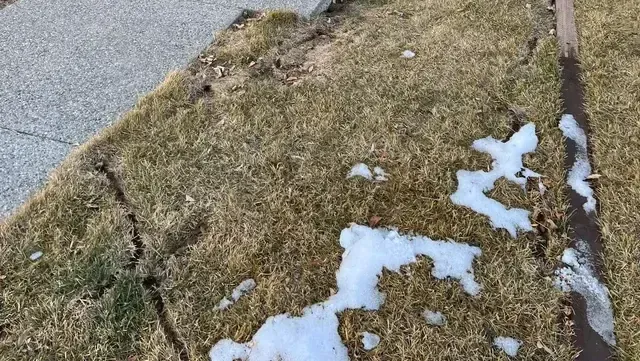
Roots of Trees:
Tree roots may grow under concrete and push slabs up, making the surface uneven. As trees grow, their roots grow outward and upward for moisture and nutrients, and they push against nearby concrete structures. In extreme cases, the roots crack or break away completely from the concrete, posing a safety hazard or requiring major repairs.

Weather Conditions:
Freeze-thaw cycles in colder climates may cause the ground to expand and contract, cracking or lifting. When water enters small cracks in the concrete and freezes there, it creates larger cracks or moves slabs.
Repeated freezing and thawing cycles cause more damage, especially in places with poor drainage or high temperature swings.

Heavy Loads:
Too heavy concrete, such as from a vehicle or construction equipment, can crack or sink. Overloading stresses the underlying soil or subgrade that was not designed to support the weight. Over time, the excess load weakens the soil or foundation, causing uneven settling or visible cracks in the concrete.
Poor Installation:
The original concrete is more likely to fail because it was not installed or supported properly. Early failure may be due to improperly mixed concrete, poorly compacted subgrades, or inadequate reinforcement materials.
Without proper curing or leveling, the concrete can crack, shift, or sink when normal use is performed.
Knowing these causes can help property owners determine the cause and fix the issue.
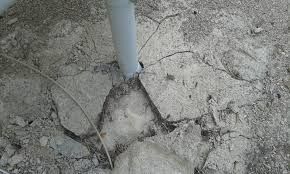
Common Places for Trip Hazards
Trip hazards occur just about anywhere there is concrete.
The most common locations include:
Sidewalks:
Public walkways are often rough and uneven. Over time, tree roots, weather changes, or poor initial construction may cause sidewalks to shift or crack and make them unsafe for pedestrians. Regular inspection and maintenance are essential in these high traffic areas.
Driveways:
Parts of a driveway may settle over time, especially near a garage or street. Changes in soil composition, water loss, or improper compaction during installation can result in significant unevenness. Quick repairs prevent accidents and add curb appeal and value to the property.
Parking Lots:
Uneven parking lots can lead to customer injuries and liability issues for businesses. Heavy vehicle traffic, weather conditions, and settling ground may all contribute to surface deterioration. A well-maintained parking lot shows care for customers and can help avoid costly legal claims.
Patios:
Cracks or uneven areas in outdoor living areas can create tripping hazards for families and guests. The most common culprits are shifting ground or freeze-thaw cycles. Resolving these problems creates a safer and more enjoyable space for entertaining and relaxing.
Warehouses and Industrial Spaces:
Uneven concrete floors in commercial properties can lead to workplace injuries and OSHA violations. Machinery, forklifts and high foot traffic can cause additional wear and tear. Level surfaces reduce downtime, increase productivity and maintain a safe work environment.
Identifying these areas on your property can help you correct potential hazards before they become costly problems.
Avoid Unexpected Legal Litigation

When someone trips and falls on your property, the injuries may not stop there. Medical expenses, lost earnings and emotional distress may be brought against property owners - commercial or residential - in case the event was the result of negligence.
Not addressing trip hazards can lead to lawsuits, higher insurance premiums and damage to your reputation. The financial and legal ramifications could be particularly severe for businesspeople.
The proactive management of trip hazards demonstrates responsibility and reduces the risk of unexpected legal issues.
How to Address Trip Hazards on Your Property
The key to managing trip hazards is taking proactive steps. How you can do it:
Inspect Your Property Regularly:
Look around your property for uneven surfaces or cracks in the concrete.
Repair Problems Quickly:
Once you discover an issue, resolve it before it worsens.
Choose Professional Solutions:
DIY fixes like patching might provide temporary relief but often fail to deliver long-lasting results. It is safer to use professional concrete leveling.
Schedule Routine Maintenance:
Regular inspections and maintenance can catch problems before they get worse.
All of these steps keep your property safe and help prevent accidents or legal disputes.
Save Money by Addressing Tripping Hazards
Repairing concrete is one cost that can add up quickly - but ignoring trip hazards can cost much more in the long haul.
Here's how addressing the issue saves you money:
Avoid High-Cost Repairs:
Fixing a small issue early is much cheaper than fixing larger structural problems later.
Avoid Legal Fees:
Lawsuits and medical bills from injuries can quickly add up and cost more than the cost of repair work.
Lower Insurance Premiums:
Reducing risks on your property may reduce your liability insurance costs.
If you look at concrete repairs as an investment in safety and liability prevention, you save money over time.
Why Concrete Leveling Should Be a Priority for Business Owners
For business proprietors, maintaining a safe and welcoming property is important too. Leveling concrete is an economical way to stay safe and reduce risks. Uneven surfaces in high-traffic areas such as parking lots or entryways can cause customer injuries and lawsuits.
Concrete leveling eliminates trip hazards,
maintains ADA compliance and creates a positive image for businesses. Safe walking surfaces protect customers and employees alike and are an investment for any business.
Protect Loved Ones from a Potentially Life-Altering Injury
Homeowners often overlook the risks posed by uneven concrete on their property. A single fall can break bones, fracture the head, or cause permanent disabilities. These injuries could be life changing for the victim and family.
Leveling concrete walkways, patios and driveways can protect your family and keep everyone safe.
Reduce Customer Injury and Lessen Liability Fears
For businesses, the simple act of a customer tripping on uneven concrete can lead to serious legal action and a damaged reputation. Handling trip hazards shows you care about your customers' safety. Additionally, it lowers the chance of liability so you can concentrate on operating your business without being concerned about accidents.
Improve Curb Appeal
Beyond safety, leveling concrete gives your property a finished look. Uneven or cracked surfaces can make a property look neglected and turn away potential customers or reduce its value.
Smooth, even surfaces give a polished, professional look that makes a great first impression. Whether you're a homeowner or a business owner, better curb appeal makes your property value and makes it stand out.
Polyurethane Foam Injection: A Modern Solution for Trip Hazards
The most effective approach to trip hazards is polyurethane foam injection. This advanced technique uses a rubber-like foam injected beneath the concrete slab to raise the slab back to its original level. Benefits of this method are:
- Quick and Efficient: Many repairs are finished in a few hours with little disturbance to your property.
- Results Are Durable: Polyurethane foam lasts and can withstand the weather.
- Cost-Effective: This is usually less expensive than replacing entire sections of concrete.
Polyurethane foam injection is a cost-effective method to repair uneven concrete and to prevent trip hazards.
How KW Concrete Leveling Can Help
When it comes to trip hazards, the professionals at
KW concrete leveling can help. Our technicians use industry-leading methods like polyurethane foam injection. We offer a low-cost alternative to slab replacement and keep property owners safe, avoid lawsuits and improve curb appeal.
With our help, you can spot trip hazards early, fix them quickly, and protect your property value.
Wrapping Up - Avoid Trip Hazards
Trip hazards are more than an inconvenience - they create serious safety and legal issues for property owners. Regardless of whether you have a house, a company, or perhaps both, repairing uneven concrete can safeguard others, help you save money, and also make your house look better than brand new.
Choosing professional solutions such as concrete leveling can prevent injuries, reduce liability fears and improve curb appeal. Wait for a trip hazard to become a costly problem - act now and enjoy the security of a safer, more secure property.
Call For An Estimate!
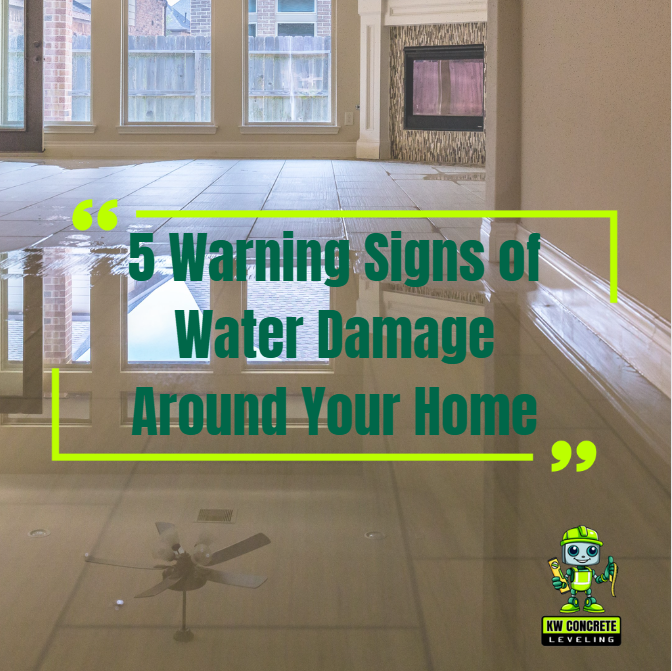
Quick Links
Contact Details
Phone: 314-661-5440
Location: St. Louis Missouri
Hours:
- Mon - Fri
- -
- Sat - Sun
- Closed
Privacy Policy | Terms & Conditions
All Rights Reserved | KW Concrete Leveling in St. Louis
